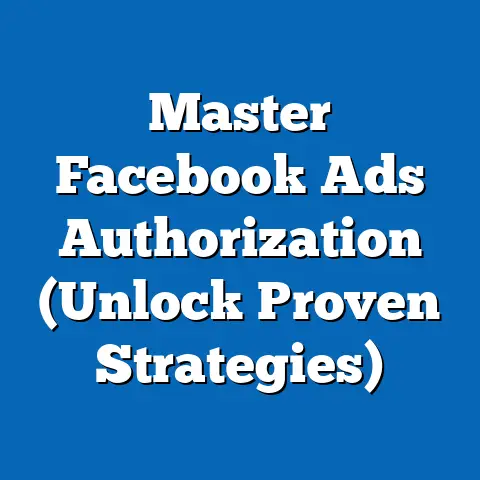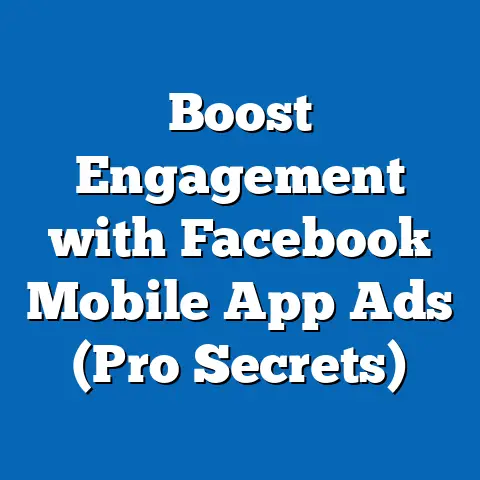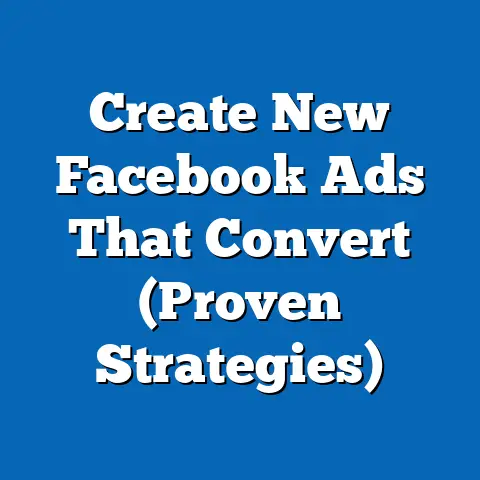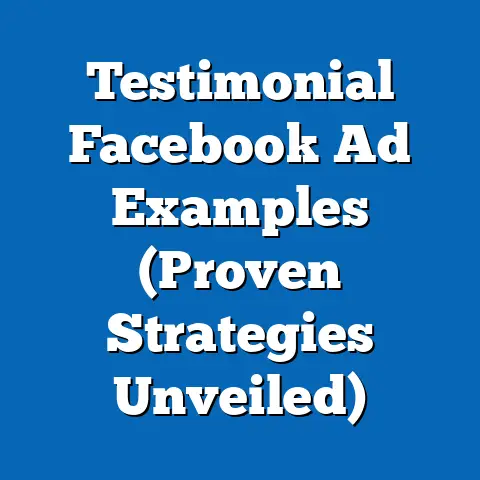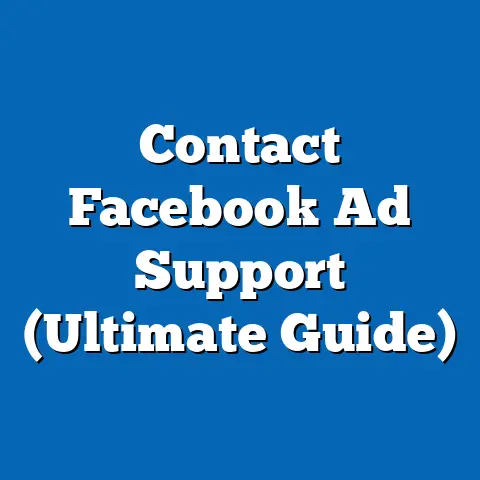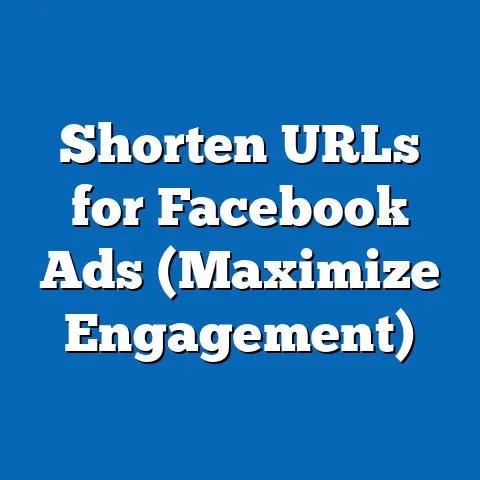Maximize Engagement with Facebook Ad Videos (Pro Tips)
As a digital marketing expert, I’ve seen firsthand the incredible power of video on social media. And when it comes to reaching younger audiences, video advertising on platforms like Facebook is not just effective, it’s essential. Think about it: kids today are practically born with a tablet in their hands! They’re consuming content at an astonishing rate, and video is their preferred medium.
But here’s the kicker: you can’t just repurpose your adult-focused ads and expect them to resonate with kids. Targeting children requires a unique, thoughtful approach. They have different interests, shorter attention spans, and a completely different understanding of the world. Plus, you need to consider the ethical implications and parental controls.
This isn’t just about selling products; it’s about shaping young minds and creating positive experiences. In this article, I’m going to share my insights and pro tips on how to create engaging Facebook video ads that capture the attention of young audiences, all while being responsible and effective. We’ll dive into understanding your audience, crafting compelling content, leveraging Facebook’s features, optimizing timing, and measuring your success. Let’s get started!
Understanding Your Audience
Before you even think about filming a single frame, you need to truly understand who you’re trying to reach. Children aren’t just a homogenous group; they’re a diverse audience with varying interests and developmental stages.
First, let’s talk about attention spans. It’s a classic stereotype, but it’s true – kids generally have shorter attention spans than adults. This is why your videos need to be concise and captivating from the very first second. Think about it like this: you have about 5-10 seconds to grab their attention before they scroll on to the next video.
Another crucial aspect is age-appropriate content. What appeals to a toddler is vastly different from what interests a school-aged child. Segmenting your audience based on age groups is key. For example:
- Toddlers (1-3 years old): Simple, repetitive content with bright colors and familiar characters. Think nursery rhymes, basic shapes, and animals.
- Preschoolers (3-5 years old): Slightly more complex stories with educational elements. They love learning about new things, but keep it fun and engaging.
- School-aged children (6-12 years old): More sophisticated narratives with humor and relatable situations. They’re interested in games, toys, and popular culture.
But here’s a twist: you’re not just targeting the children themselves. You’re also targeting their parents. Remember, parents are the gatekeepers. They’re the ones who ultimately decide what their children consume. Your ads need to address both the children’s interests and the parents’ concerns.
Think about highlighting the educational value of your product or service. Parents are often looking for ways to enrich their children’s lives. Showcase how your product can help their child learn, grow, and develop. Also, emphasize safety and quality. Parents want to know that your product is safe for their children and made with high-quality materials.
Takeaway: Understanding your audience is the foundation of any successful advertising campaign. Segment your audience by age group, consider parental influence, and tailor your content accordingly.
This is where your creativity comes into play. The goal is to create content that not only grabs their attention but also keeps them engaged.One of the most effective ways to do this is by using bright colors, fun animations, and relatable characters. Think about some of the most popular children’s shows. They’re visually stimulating and feature characters that kids can connect with.
I remember working on a campaign for a children’s clothing brand, and we decided to create a series of animated videos featuring a group of animal friends. Each video showcased a different outfit and told a short, engaging story. The results were phenomenal! Kids loved the characters, and parents appreciated the cute and wholesome content.
Storytelling is another powerful tool. Children love stories, and they’re more likely to remember a message that’s presented in a narrative format. Create a story around your product or service. Show how it can solve a problem, make their lives easier, or simply bring them joy.
But remember, keep it simple! Children have a limited understanding of complex concepts. Your message needs to be clear, concise, and easy to understand. Avoid using jargon or complicated language.
And don’t forget the call-to-action! What do you want children (or their parents) to do after watching your video? Make it clear and straightforward. For example:
- “Ask your parents to visit our website!”
- “Download our free app today!”
- “Watch more videos on our YouTube channel!”
Finally, humor is your friend. Children love to laugh, and a funny video is more likely to be shared and remembered. But be mindful of your humor. Avoid anything that could be considered offensive or inappropriate.
Takeaway: Captivating video content is key to engaging young audiences. Use bright colors, fun animations, relatable characters, and storytelling to capture their attention. Keep your message simple, clear, and humorous.
Leveraging Facebook Features
Facebook offers a variety of features that can enhance the performance of your video ads. Let’s explore some of the most effective ones.
First, consider using Facebook Stories and Reels. These are short-form video formats that are perfect for capturing attention quickly. They’re also highly engaging and can be a great way to reach a wider audience.
When creating videos for Stories and Reels, keep them short and sweet. Aim for a length of 15-30 seconds. This is the sweet spot for keeping children engaged without losing their attention.
Another important aspect is optimizing video length. While longer videos can be effective for some audiences, children generally prefer shorter content. Experiment with different lengths to see what works best for your target audience.
I’ve found that interactive elements can significantly increase engagement. Facebook offers a variety of interactive features, such as polls, quizzes, and questions. These can be a fun way to get children involved with your video and encourage them to interact with your brand.
For example, you could create a poll asking children to vote for their favorite character or product. Or you could create a quiz testing their knowledge of a particular topic.
Takeaway: Facebook offers a variety of features that can enhance the performance of your video ads. Use Facebook Stories and Reels for short, catchy videos. Optimize video length for children and incorporate interactive elements to increase engagement.
Timing and Frequency
Timing is everything in advertising. You need to reach your audience when they’re most receptive to your message. When it comes to children, this means considering their daily routines.
Think about when children are most likely to be online and watching videos. This might be after school, on weekends, or during school holidays. Experiment with different times to see what works best for your target audience.
I’ve found that posting video ads in the late afternoon or early evening can be particularly effective. This is when children are often winding down after a busy day and looking for something to entertain them.
However, it’s also important to avoid overwhelming your audience. Bombarding them with too many ads can be counterproductive and lead to ad fatigue.
Finding the right frequency is a balancing act. You want to be visible enough to stay top-of-mind, but not so frequent that you become annoying.
One way to do this is by tracking and analyzing the performance of your ad campaigns. Facebook Insights provides valuable data about when your audience is most active and what types of content they’re most interested in.
Use this data to refine your timing and frequency. Experiment with different posting schedules and see what generates the best results.
Takeaway: Timing and frequency are crucial for maximizing engagement. Consider children’s daily routines and experiment with different posting schedules. Track and analyze your ad performance to refine your timing and frequency.
Measuring Success
So, you’ve created your video ads, targeted your audience, and optimized your timing. Now, how do you know if your efforts are paying off? That’s where measuring success comes in.
Key performance indicators (KPIs) are essential for tracking the performance of your ad campaigns. These are metrics that provide insights into how well your ads are resonating with your audience.
Some of the most important KPIs for video ads aimed at children include:
- View rates: The percentage of people who watch your video.
- Engagement rates: The number of likes, shares, and comments your video receives.
- Conversion rates: The percentage of people who take a desired action after watching your video (e.g., visiting your website, downloading your app).
Facebook Insights is a powerful tool for gathering data and insights about audience behavior and preferences. It provides detailed information about who is watching your videos, how long they’re watching, and what actions they’re taking.
Use Facebook Insights to track your KPIs and identify areas for improvement. For example, if your view rates are low, you might need to create more compelling video content. If your engagement rates are low, you might need to incorporate more interactive elements.
A/B testing is another valuable technique for optimizing your ad campaigns. This involves creating two different versions of your video ad and testing them against each other to see which performs better.
For example, you could test different headlines, calls-to-action, or visuals. The goal is to identify the elements that resonate most with your audience and incorporate them into your future campaigns.
Takeaway: Measuring success is crucial for optimizing your ad campaigns. Track your KPIs, use Facebook Insights to gather data, and A/B test different video ad formats and messages.
Conclusion
Creating engaging Facebook video ads for children requires a unique blend of creativity, strategy, and responsibility. It’s not just about selling products; it’s about creating positive experiences and shaping young minds.
By understanding your audience, crafting compelling content, leveraging Facebook’s features, optimizing timing, and measuring your success, you can create video ads that not only capture their attention but also leave a lasting impression.
Remember, children are not just consumers; they’re also influencers. By engaging with them in a meaningful way, you can build brand loyalty and create a positive association with your product or service.
So, go ahead and unleash your creativity. Think outside the box. Experiment with different formats and messages. And most importantly, have fun! The world of children’s advertising is full of possibilities. By embracing a creative and strategic approach, you can make a positive impact on the lives of children and their families.
Now, go out there and create some amazing video ads that will captivate young audiences and leave them wanting more! I’m excited to see what you come up with.

